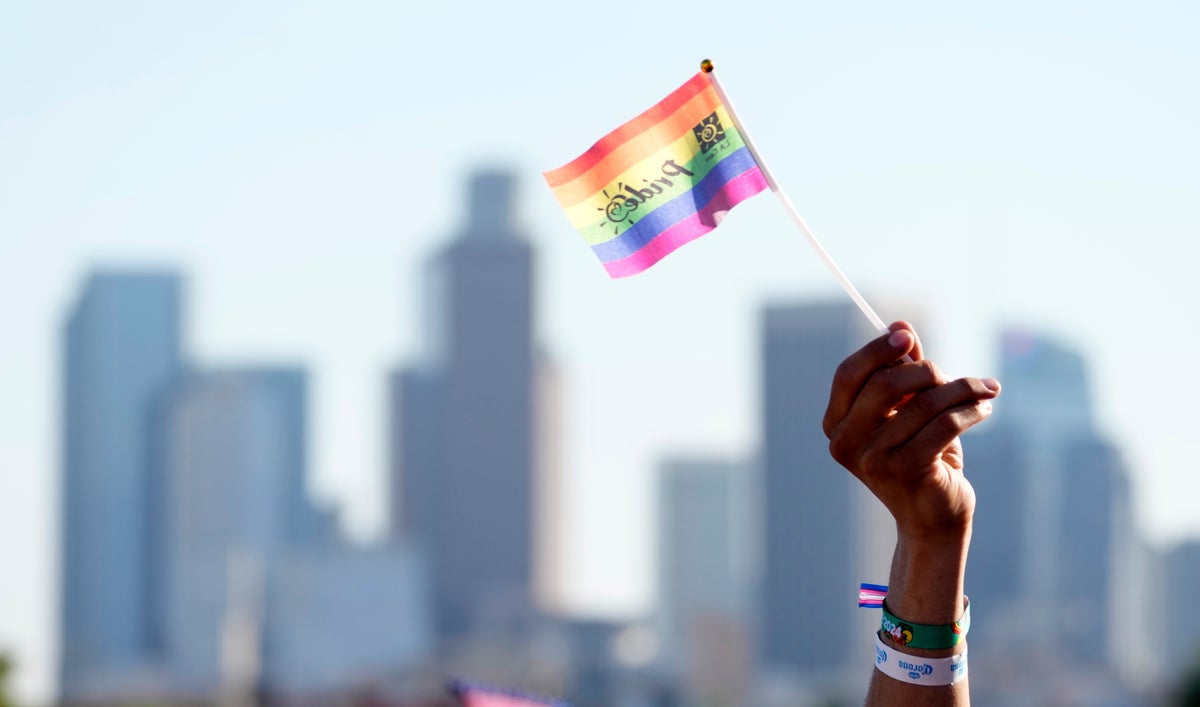
Support truly
independent journalism
Gay male couples tend to gravitate toward big cities on the U.S. coasts, while lesbian couples tend to prefer smaller, more pastoral cities or towns, according to 2020 census figures that reinforce some preconceived notions about LGBTQ+ communities in the U.S.
Counties with the highest concentrations of male same-sex couple households were those that include San Francisco, Manhattan, Boston and Washington, D.C., according to a U.S. Census Bureau report released last week.
Some of the highest concentrations of female same-sex couple households were in Hampshire and Franklin counties in the Berkshires, a rural region of western Massachusetts that is home to several colleges, art museums and theaters. Also in the count were counties that are home to Portland, Oregon; Asheville, North Carolina; and Ithaca, New York, where Cornell University and Ithaca College are located.
The locations aren't entirely surprising, since they fall in line with cultural stereotypes of gay men being urban creatures and lesbian women being outdoorsy, said Crissi Dalfonzo, director of the Center for LGBT Education, Outreach and Services at Ithaca College.
“Stereotypes often exist for a reason, but they can be problematic because they can take away the individuality," Dalfonzo said.
Gender pay inequity may be a factor, too. Experts say some of the differences may be due to male couples having higher incomes and able to live in more expensive big cities, while female couples are more likely to be raising children.
“In general, large urban settings are more expensive and less child-friendly than suburban and rural areas. As such, it makes sense that female couples would opt for less urban locales," said Gary Gates, a retired UCLA demographer who studied LGBTQ+ issues.
The differences play into some traditional stereotypes, but they also may boil down to where male and female couples feel most at ease, whether it's a feeling of community or safety in smaller towns or the comfort of “gayborhoods” in big cities, said Amy Stone, a sociology professor at Trinity University in San Antonio.
“It's where people feel safe living or where they find support. Where gay couples feel safe and where female couples feel safe isn't always the same place," Stone said.
Stone studied at Amherst College in Hampshire County, Massachusetts, in the Berkshires, which is also home to the University of Massachusetts Amherst and two historically all-female colleges, Smith and Mount Holyoke colleges. The county had the largest share of female same-sex couple households in the U.S., at almost 4%, according to the 2020 census. Over the decades, it has been home to lesbian music and film festivals, as well as scores of lesbian-owned businesses and cultural institutions.
“Everyone knew it was a place lesbians often stayed after graduating,” Stone said. “There have been a lot of lesbian institutions there for a long time.”
San Francisco County had the largest share of male same-sex couple households, at almost 6%.
There was some overlap between the 10 cities and counties with the largest share of female and male same-sex couple households — Washington, D.C.; Richmond, Virginia; and St. Louis. Rounding out the list for male same-sex couple households were counties or parishes that are home to New Orleans, Denver, Atlanta and Fort Lauderdale, Florida. For female same-sex couple households, it included the county that is home to Decatur, Georgia, a suburb of Atlanta; and Baltimore.
In pure numbers, Los Angeles County was tops for both types of same-sex couples, but it's also by far the most populous county in the U.S., with more than 10 million residents.
In its current form, the once-a-decade census captures LGBTQ+ people only if they are living together as spouses or partners, through queries about household relationships, which is only about a sixth of the LGBTQ+ population in the U.S., according to some estimates. As a result, it misses people who are single or are not cohabitating, as well as transgender people.
It has only been in the last decade that the Census Bureau added “same sex” and “opposite sex” to its relationship categories for spouses and unmarried partners in its surveys and the census.
The Census Bureau currently is looking at adding questions about sexual orientation and gender identity for people ages 15 and older to its annual American Community Survey, which is the agency's most comprehensive survey of American life.
Gay couples are highly visible in Broward County, home to Fort Lauderdale, which has a gay police chief and mayor, said Keith Blackburn, who heads the Greater Fort Lauderdale LGBT Chamber of Commerce.
“It’s the warmth and acceptance that everyone in Broward County seems to give our community. We have a lot of openly gay officials,” Blackburn said. “You see same-sex couples holding hands everywhere.”







